3. Whoever intentionally lies, or practices sorcery, or spies upon the behavior of others,
or intervenes between the two parties in a quarrel to help the one against the other
is also to be put to death.
The Great Yasa of Genghis Khan
That's right, folks. You lie -- you die. That's what you get for being naughty! If you want to build a tough nation from bunch of nomads you got to have some tough laws.
After being proclaimed as Genghis Khan my boss left Juchi to deal with Jalal ad-Din in Samarkand and made his famous maneuver into the Kyzyl Kum desert. While one part of his army (tumens Beijing I, Beijing II and Tangut Catapult) took the direct route from Mongolia to attack the caliph's border cities head-on, he had secretly pulled and pushed another division of warriors over a distance longer than any other army had ever covered--two thousand miles of desert, mountains, and steppe--to appear deep behind enemy lines, where least expected. Even trade caravans avoided the Kyzyl Kum, the fabled Red Desert, by detouring hundreds of miles to avoid it; and that fact, of course, was precisely why Genghis Khan chose to attack from that direction. By befriending the nomads of the area, he was able to lead his army on a hitherto unknown track through the stone and sand desert. This long journey brought us into contact with Yaroslav of Russian Empire -- our soon-to-be sworn enemy for the next few hundred years

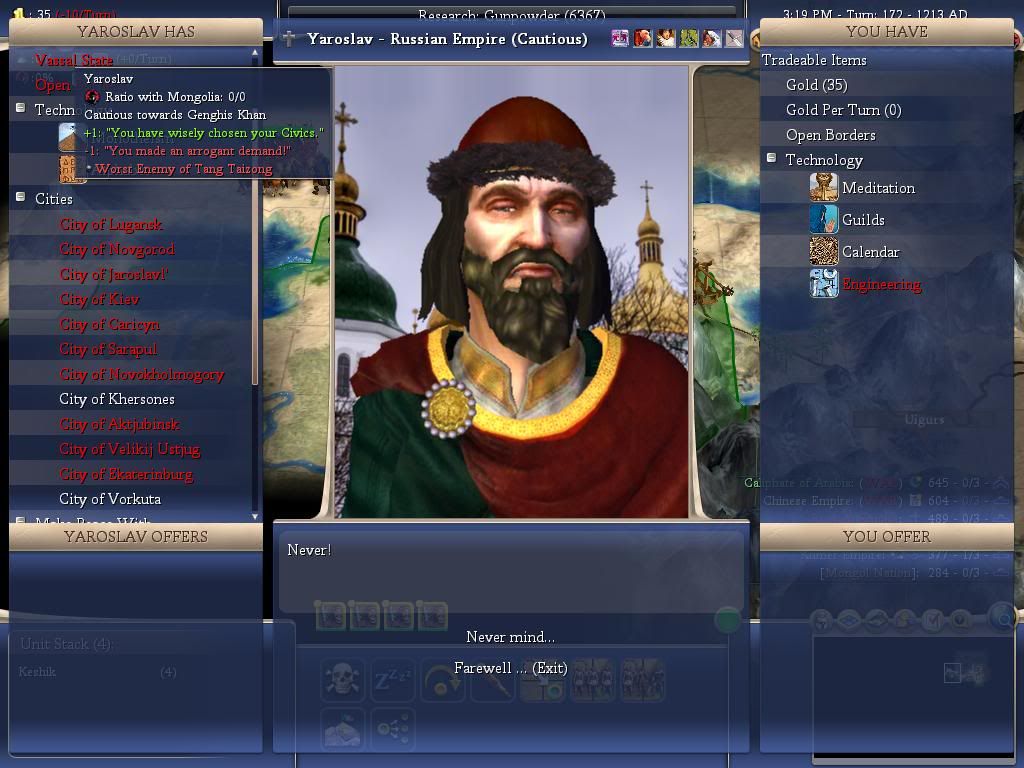
As always, we demanded tribute right after the initial greetings and you can see yourself what was the Russian answer. Few turns later some Western historian published a work proclaiming Russia to be the largest Empire on the planet with 13 cities. This was the start of the longest war Mongols would ever know!
Meanwhile Tolui was having some fun in China, picking on some stray troops and gaining experience:
I especially very proud of this drawing of mine -- oh how magnificent are our Keshiks in battle! Look how those Heavy Swordsmen fly in air near the ruins of Beijing:
Unfortunately for us Tolui's oldest brother -- Juchi was having really hard time with that army of Camel Archers back in Khwarezm. You can see what I mean on the picture below:
There used to be our precious Catapult on that hill where Jalal ad-Din is proudly standing

. How he got there from Samarkand (left corner)? Do those Camels (2 MP) gain no movement penalty when crossing desert hills? How this daring attack was even possible? And to make matters worse -- Juchi still has only 47% odds to beat that 74/100 HP Camel. So he hesitates and draws the rightful rage of his father and brothers. They call him coward for sending unpromoted Beijing I tumen to attack Jalal ad-Din against even worse odds. So called Battle of Parwan witnessed the first major defeat of Mongol Keshiks. This is how it all happened:
Following the Mongol invasion of Khwarezm Jalal ad-Din was forced to flee towards the Hindukush, where he began to muster additional troops to face the Mongols. With the arrival of over 30,000 Afghan and Pashtoon warriors from what is now Southern Afghanistan; his strength reportedly rose to 60,000. Though badly equipped and ill-managed being tribal Lashkar, they managed to defeat the Mongol hordes of Beijing I tumen under the command of Shikhikhutug after the day long battle. But the Khwarezmian prince did not prove himself as able in victory as he had been in defeat. In a row over the booty; a Mongolian white horse; between his father-in-law and an Afghan Chief, he sided with his father-in-law. The proud Pashtoons left their camp fire burning and left the same night, despite being completely exhausted by the day's fighting. Finding himself without more than half of his fighting strength Jalal ad-Din retreated the next day. As you could imagine, he no longer had sufficient resources to last another battle and was promptly defeated by Juchi during the same year of AD 1216:
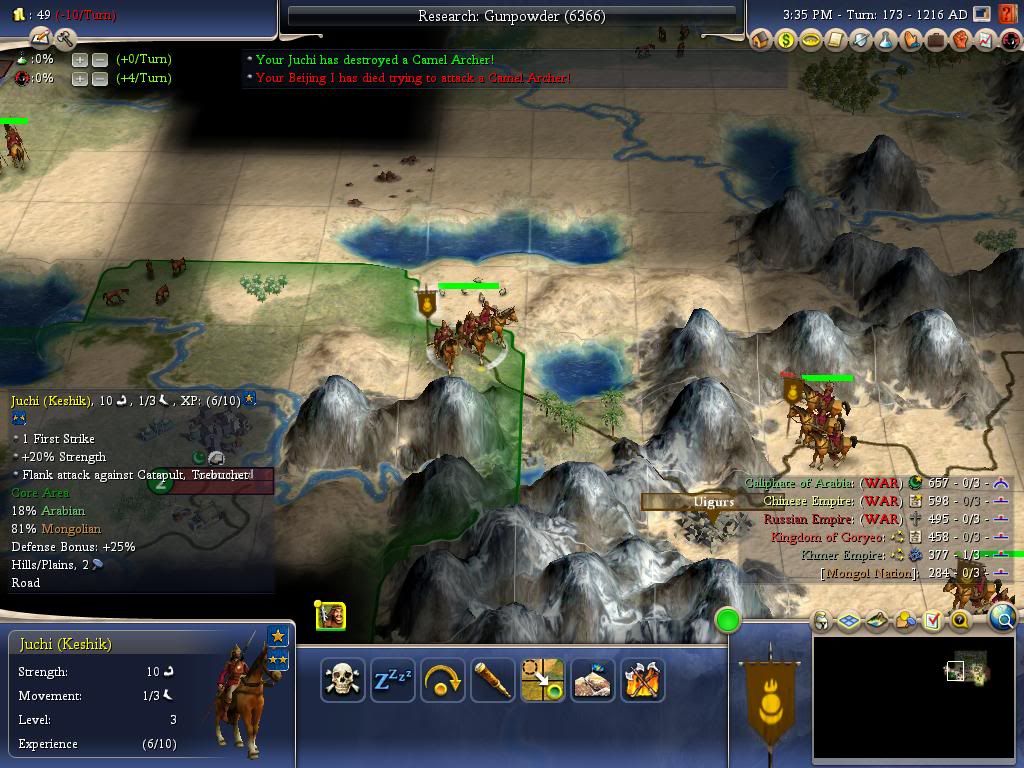
That cursed Jalal ad-Din claimed 4 Mongol units in our war with Caliphate/Khwaresm: 2 Longbows, 1 Catapult and 1 Keshik! And finally he was defeated himself. Juchi was not enjoying his easy victory, however. His hesitation to attack Camels deepened the rift between him and his father and brothers, especially second oldest brother Chagatai. Even before this incident his brothers did not like him very much, there was some question as to Juchi's true paternity. Shortly after her marriage to Genghis Khan (known as Temüjin at the time), Juchi's mother Börte was abducted by members of the Mergid confederation. She was given to a certain Chilger Bökh, who was the brother of the Yehe Chiledu, as a spoil of war. She remained in Chilger Bökh's captivity for a few months before she was recovered by Temüjin. Shortly afterwards she gave birth to Juchi. By all accounts, Genghis Khan treated Jochi as his first son, because of the love for his wife, but a doubt always remained among the Mongols whether Temujin or Chilger Bökh was the real father of Juchi. This uncertainty about his paternity was not without consequences. Juchi’s descendants, although they formed the oldest branch of the Genghis Khan’s family, were never considered for the succession in claiming their father’s heritage.
Emerging from Kyzyl Kum desert Genghis Khan personally charged Samarkand. It looked very spectacular inside:
As the Mongol soldiers looted the city, a fire broke out, razing most of the city to the ground. Genghis Khan had the people assemble in the main [Granary] of the town, where he declared that he was the flail of God, sent to punish them for their sins before ordering their execution. The people of Samarkand were ordered to evacuate and assemble in a plain outside the city, where they were killed and pyramids of severed heads raised as the symbol of Mongol victory. The same fate was awaiting even smaller city of Merv, protected by two regiments of lightly promoted Archers. This is how Transoxiana looked like circa AD 1222:
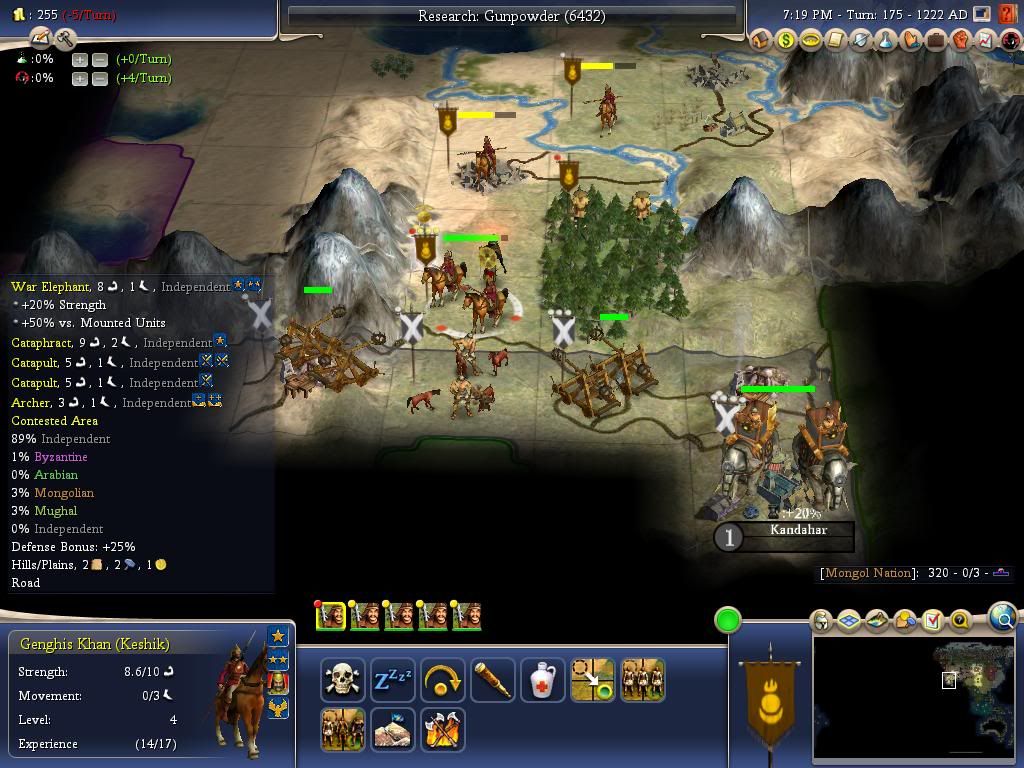
I have no idea how that Cataphract made it all the way to independent Kandahar. Looks like Byzantines (which we about to meet in Part 4) took over Persian capital Ctesiphon around AD 620, Arabs flipped the city together with deflected Cataphract, later conquered Kandahar with that unit. But if that is the case, how would you explain the absence of Islam in that city? Perhaps Byzantines where the ones who captured Kandahar and traded it to Independents?
Other than that the last part of the puzzle is simple -- Arabs were doing bad in war with Byzantines, even before we came to punch them they were unstable, and most likely Knadahar and Cataphract unit in it became independent. Kandahar was taken by Independent Sultan Mahmud of Ghazni in the 11th century followed by the Ghurids of Ghor, so Ghurids are all those grey troops preventing us from attacking the Arab capital (port city of Shiraz -- little green borders on the bottom center).
It is very sad that all the cities around here are so small and would provide us with no free Keshiks. There is absolutely no point in attacking Kandahar. What will the Great Khan do? Find out in Part 4!

. Well it took 45 years just to expand cultural borders so that Mongols could enjoy some Sheep. As of right now (after Part 1) "The History" has only this picture of Mongol resources:


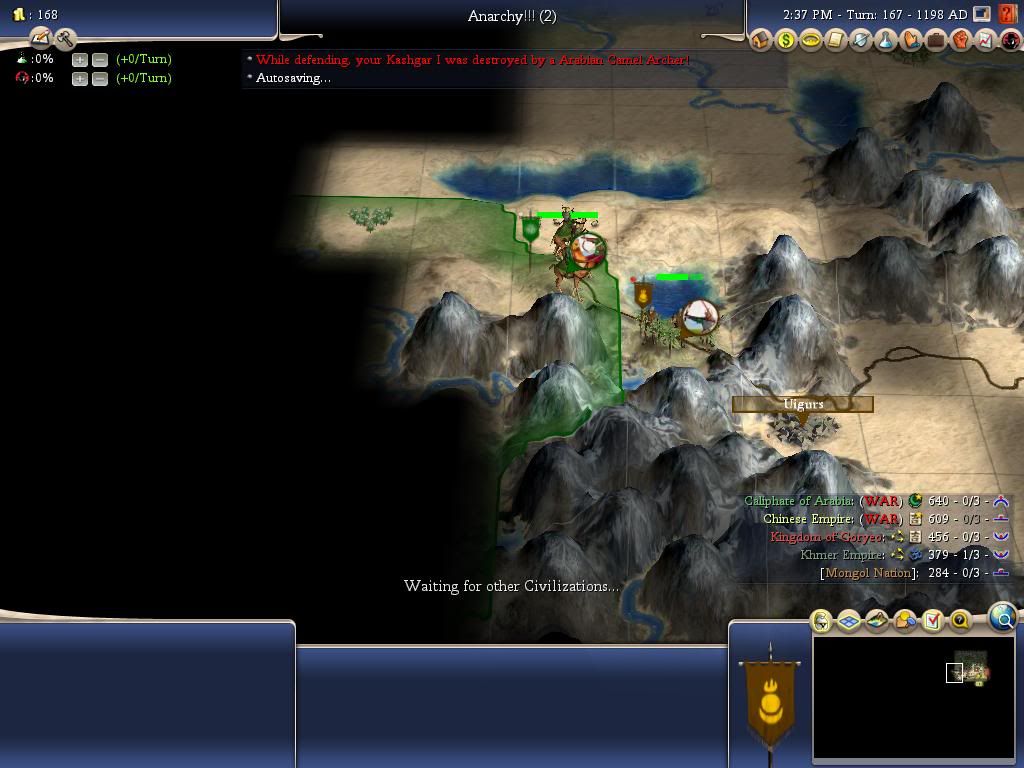
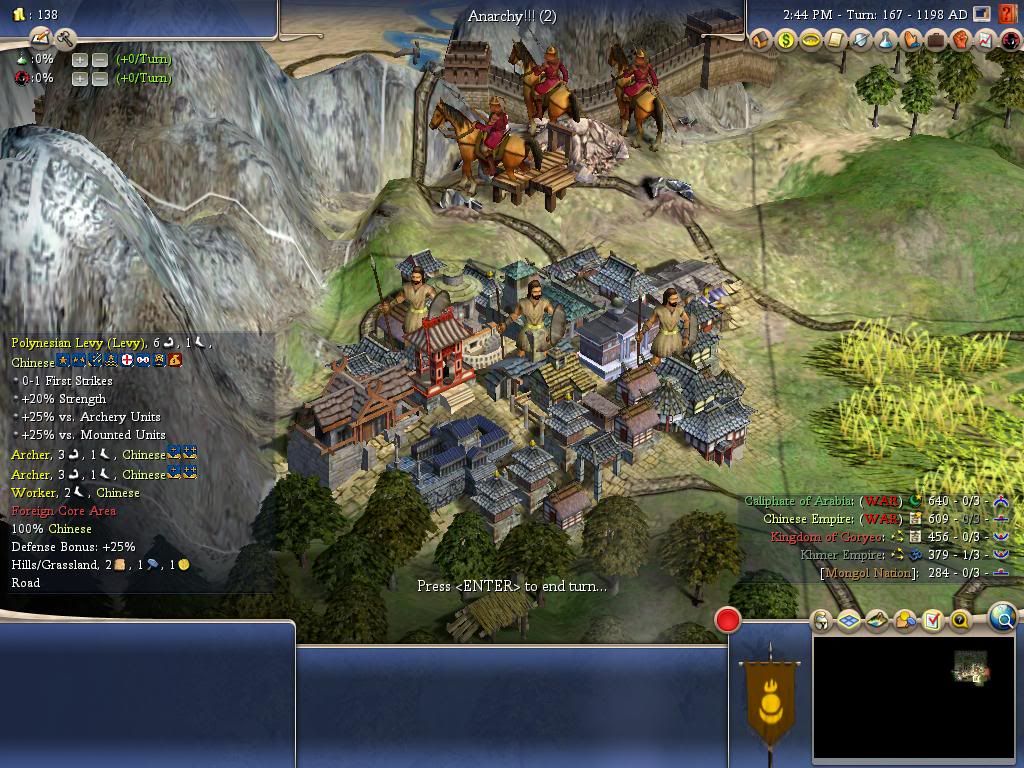


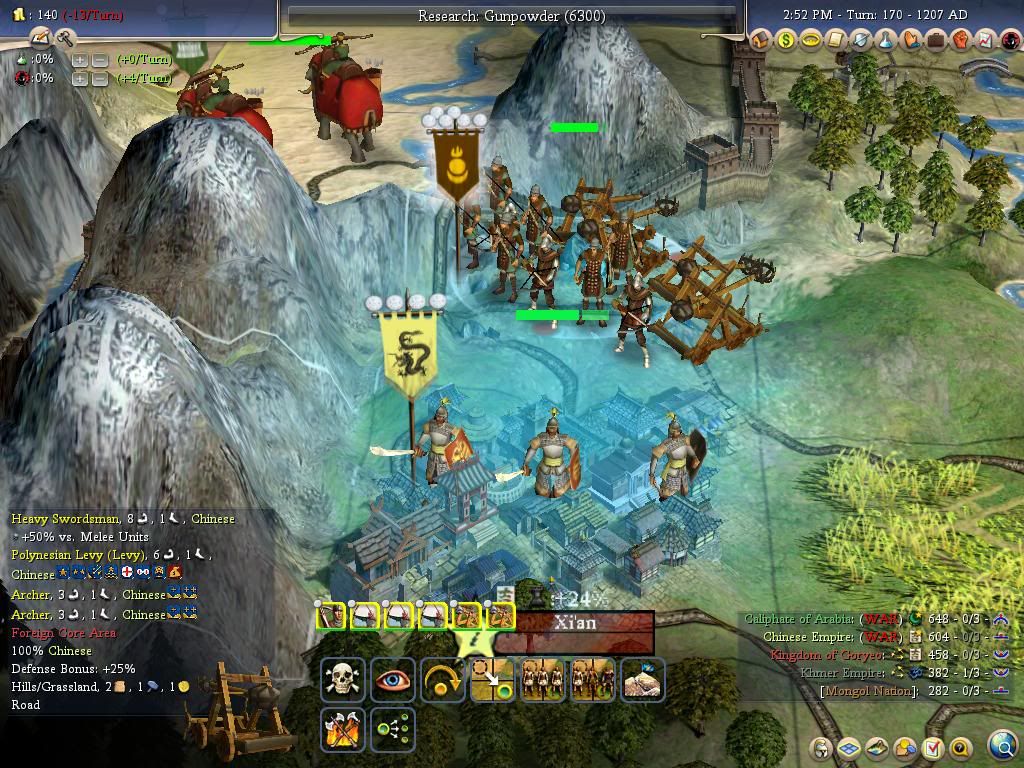
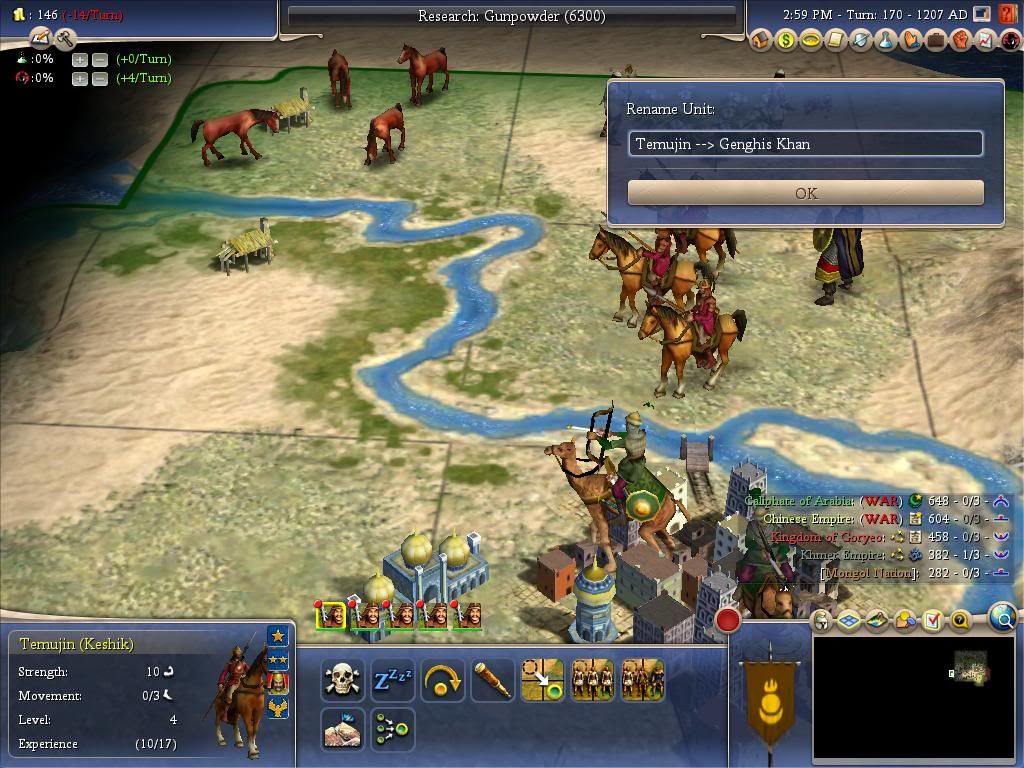




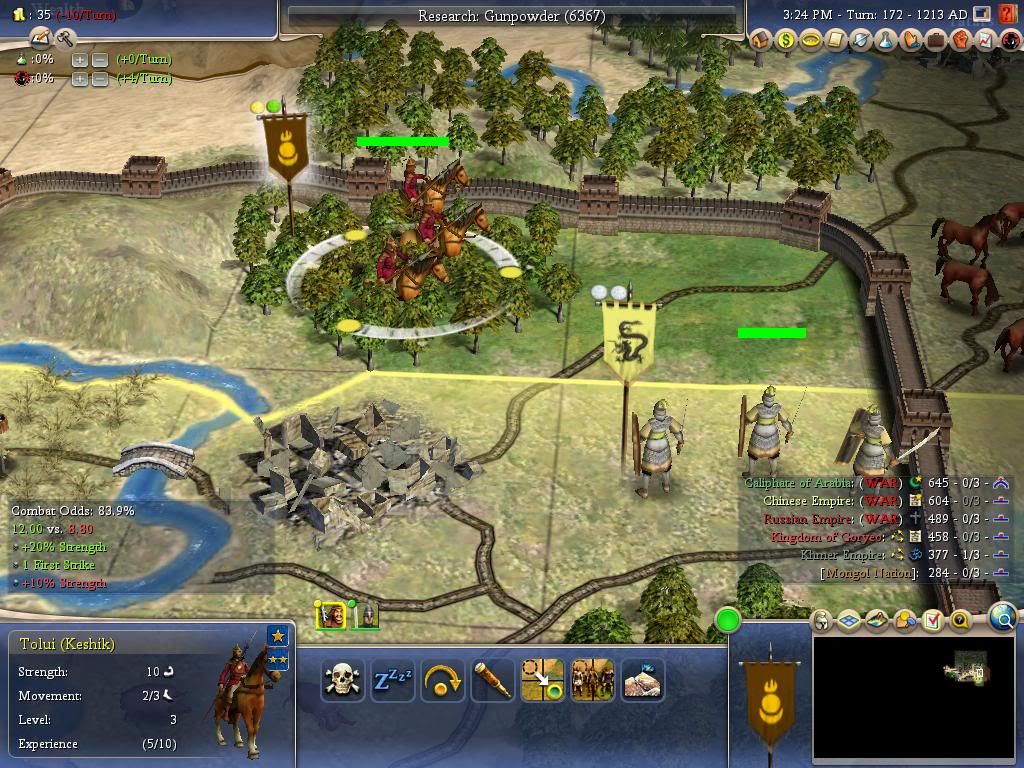

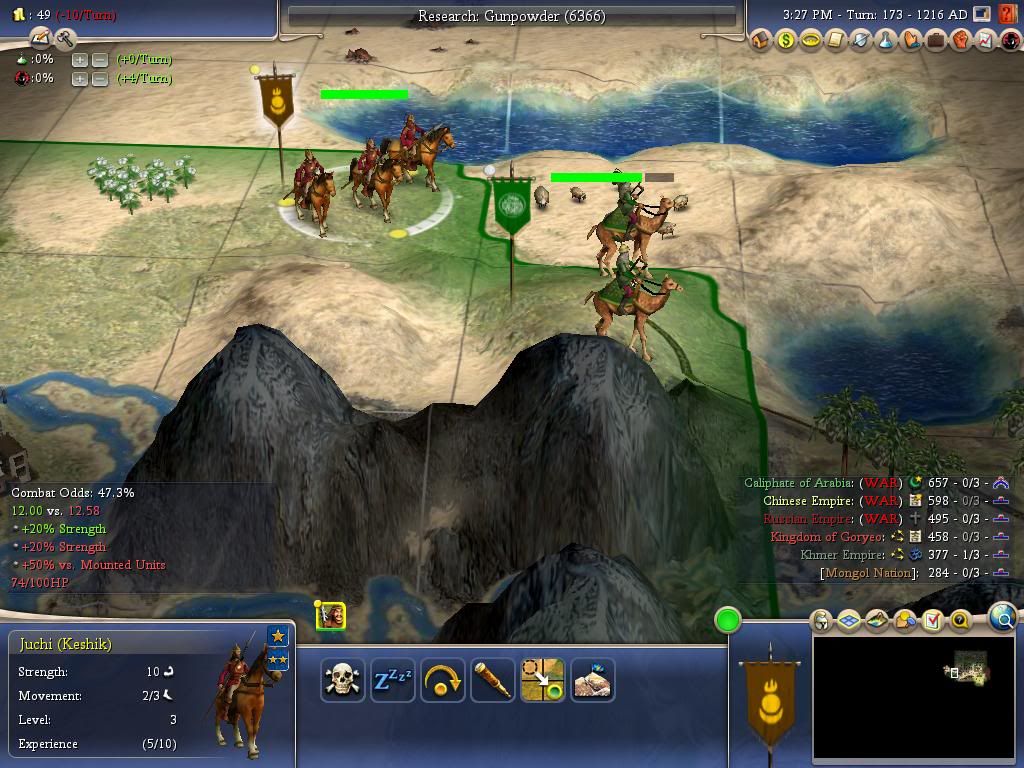
 . How he got there from Samarkand (left corner)? Do those Camels (2 MP) gain no movement penalty when crossing desert hills? How this daring attack was even possible? And to make matters worse -- Juchi still has only 47% odds to beat that 74/100 HP Camel. So he hesitates and draws the rightful rage of his father and brothers. They call him coward for sending unpromoted Beijing I tumen to attack Jalal ad-Din against even worse odds. So called Battle of Parwan witnessed the first major defeat of Mongol Keshiks. This is how it all happened:
. How he got there from Samarkand (left corner)? Do those Camels (2 MP) gain no movement penalty when crossing desert hills? How this daring attack was even possible? And to make matters worse -- Juchi still has only 47% odds to beat that 74/100 HP Camel. So he hesitates and draws the rightful rage of his father and brothers. They call him coward for sending unpromoted Beijing I tumen to attack Jalal ad-Din against even worse odds. So called Battle of Parwan witnessed the first major defeat of Mongol Keshiks. This is how it all happened:

